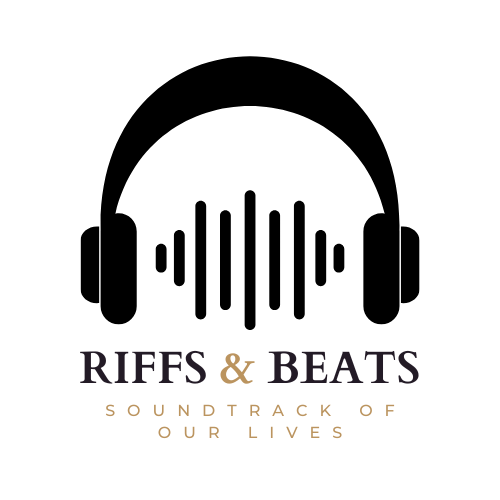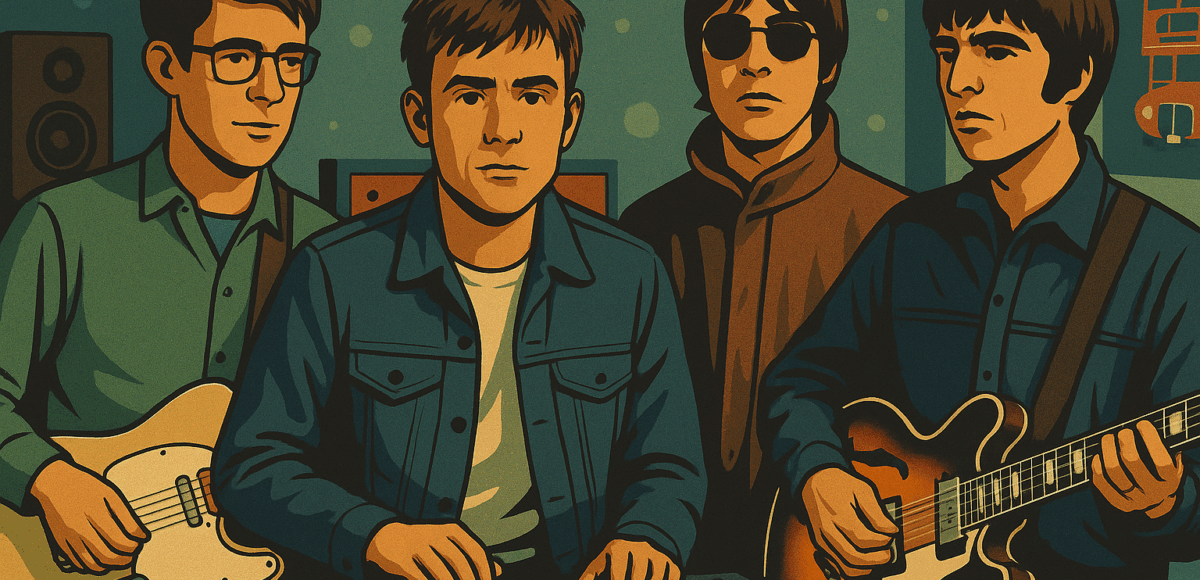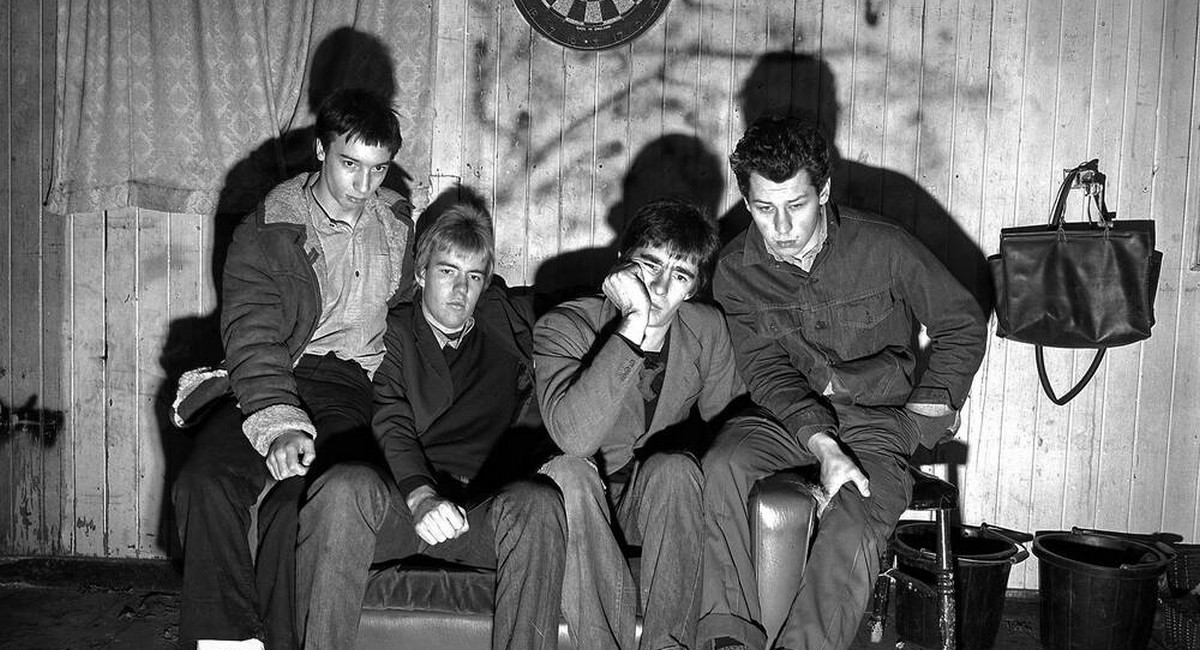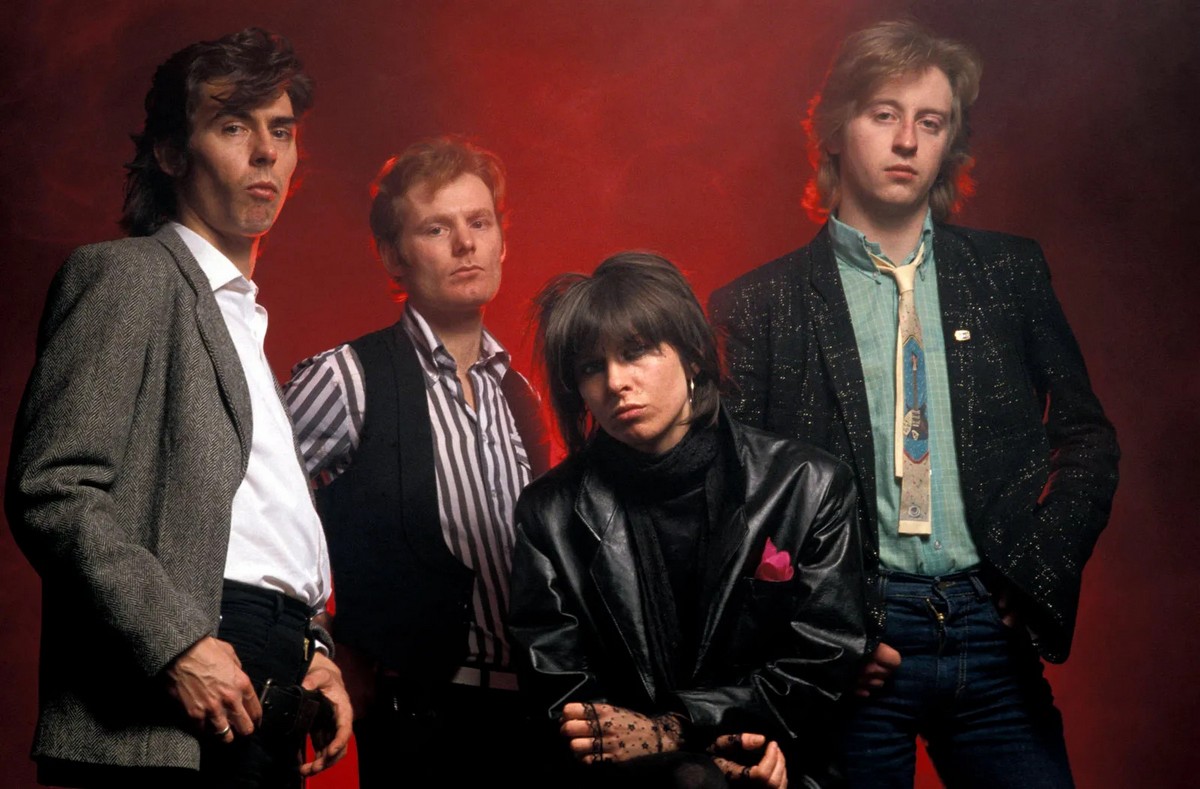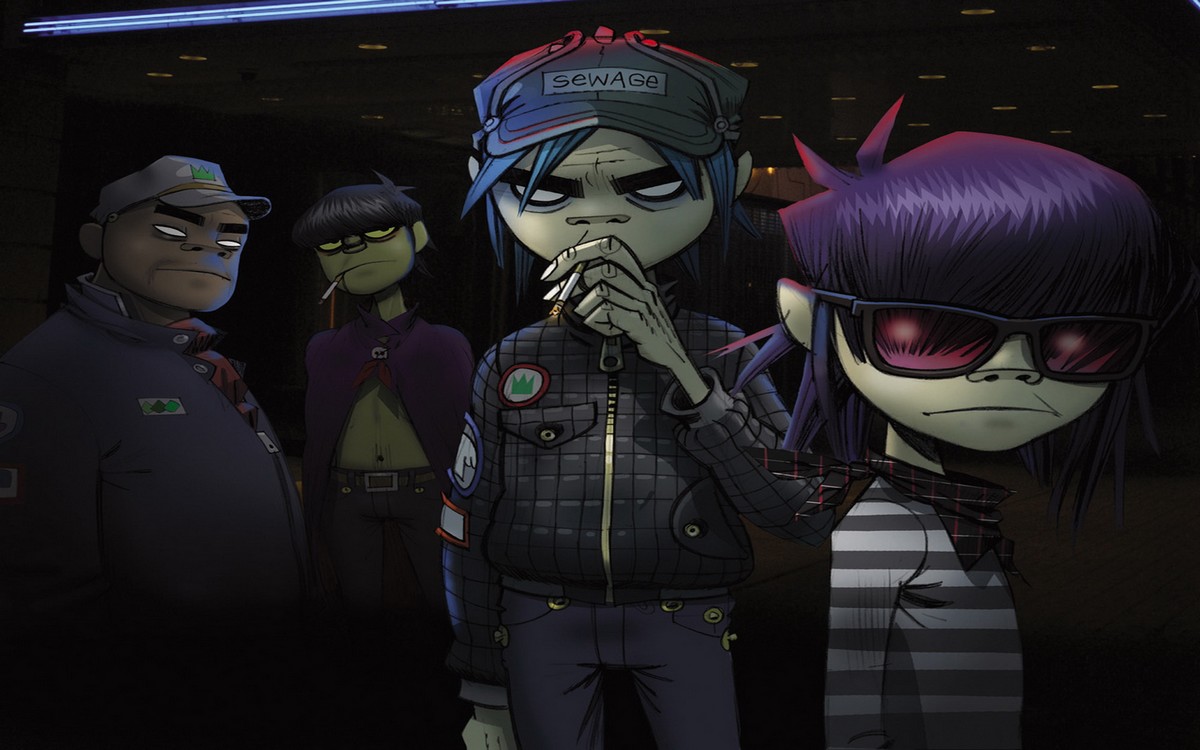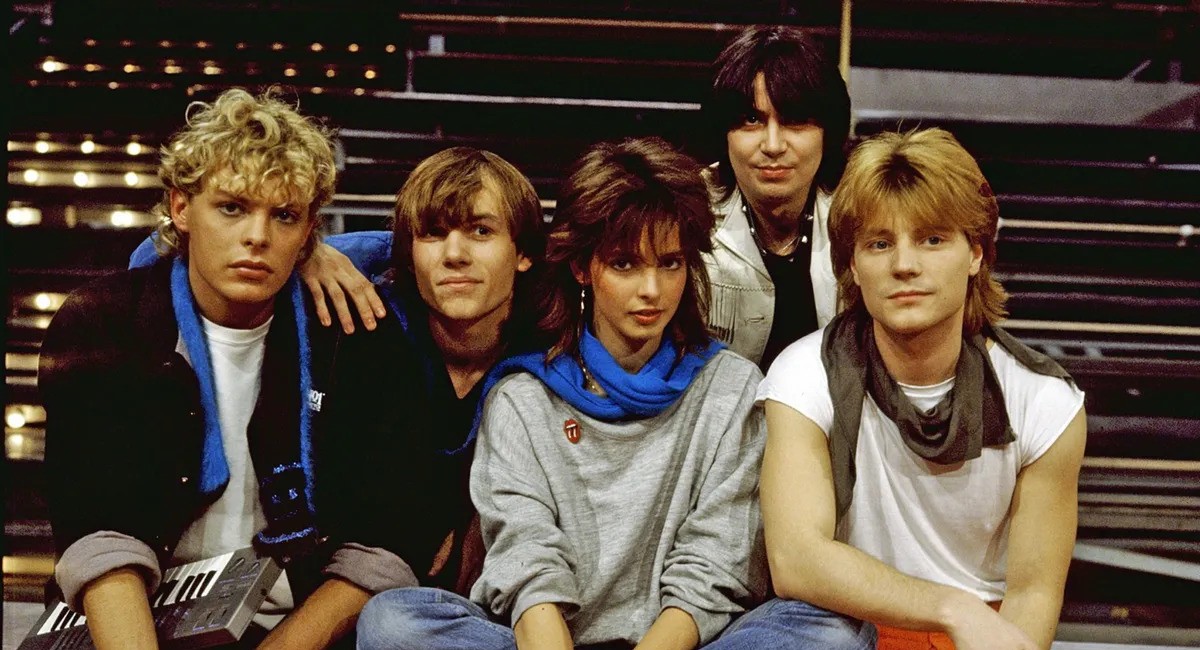The great britpop ceasefire
In a parallel 1996, somewhere between Camden’s record shops and Manchester’s grey skies, something improbable stirred in the ether. The tabloids didn’t see it coming, nor did the lads at the NME. But it was real, as real as Liam’s parka and Damon’s fringe: Blur and Oasis were making an album together.
It all began with a pub quiz.
Not one of those polite affairs with wine and cheese, but a sweaty, beer-soaked Friday night showdown in a dingy corner of Soho. Damon Albarn, half-inebriated and wholly competitive, had shouted across the room that The Beatles’ Revolver was overrated. Noel Gallagher, two pints past forgiving, had roared back with something about Parklife being a soundtrack for middle-class dog-walkers. The argument escalated, insults were thrown, pint glasses trembled. But then, by some cosmic quirk, both frontmen reached for the jukebox at the same time. Their hands brushed. Blur’s End of a Century met Oasis’ Cigarettes & Alcohol. For a moment, time seemed to fold in on itself.
“You know what, mate,” Noel had said, staring at the jukebox like it had just revealed a secret, “we should do an album. Show ’em all. Blurasis. Oalur. Whatever.”
Damon, with a grin that spelled trouble, simply raised his pint and said, “Only if I get to sing something truly miserable.”
So it began.
The project was shrouded in secrecy. No press, no leaks, no roadies. The studio, a nondescript building in Brixton, was rented under the name “The Mild-Mannered Spatulas.” Inside, chaos reigned. Graham Coxon brought in experimental jazz chords. Noel vetoed them with a single stare. Liam refused to record unless the kettle had Yorkshire Tea, not PG Tips. Alex James insisted on playing bass shirtless. Bonehead nodded a lot and tried to look wise.
Somehow, it worked.
The creative sessions were equal parts magic and madness. One track, Rainy Cigarettes on Primrose Hill, saw Damon whispering existential lyrics over a pounding riff by Noel that sounded like a bulldozer rolling through a philosophy seminar. Another track, Mockney Soul Revolt, featured Liam howling about television while Graham played clarinet through a distortion pedal. Even Dave Rowntree got a moment, drumming with spoons on empty cans of Stella.
The arguments were legendary. One afternoon, Liam threw a tambourine at Damon for calling Definitely Maybe “a bit one-note.” In return, Damon swapped Liam’s microphone with one that only worked if you stood perfectly still. A miracle, some called it. But every time they nearly came to blows, someone would play the demo of Velvet Revolution Breakfast Club – a track so hauntingly beautiful it made even the roadies cry. That song held the project together.
The album, eventually titled Common People on Supersonic Holidays, was a psychedelic brick through the Britpop window. It mashed the working-class swagger of Oasis with Blur’s art-school irony. It had string sections, shouted monologues, searing guitar solos, and a full brass band on a track called Lager for the Masses. There was even a hidden bonus track where Liam read a poem about beans on toast.
The release was set for September 23rd, 1996 – a Monday that would go down in the annals of alternate music history. The cover art featured a pixelated Morrissey crying into a puddle of marmite. Radio DJs wept with joy. John Peel reportedly passed out with excitement and came to muttering, “They’ve cracked the code.”
Fans didn’t know what hit them. Blur loyalists were stunned to hear Damon crooning over crunching Oasis guitars. Oasis die-hards struggled with the lyrical references to Baudelaire and wallpaper samples. But somehow, the collision birthed a masterpiece. The album shot to number one in seventeen countries, including one that didn’t officially exist.
It changed everything.
Jarvis Cocker moved to a commune. Thom Yorke bought a synthesizer and refused to speak in complete sentences. The Spice Girls delayed their debut, unsure if the world was ready. Even Noel and Damon, now unlikely creative partners, began referring to each other as “that daft genius.”
There were talks of a tour, but it never happened. Liam disappeared into the French Alps with a snowboard instructor. Damon took a trip to Mali and came back with twenty percussion instruments and a fascination for goats. The album stood alone, like Stonehenge with better hooks.
Years later, when asked in an interview about that strange time, Noel simply shrugged.
“It was mad, mate. But brilliant. Like trying to ride a lion while writing poetry. You bleed, but the view’s unforgettable.”
And Damon, sipping an organic smoothie through a biodegradable straw, just smiled.
“Some things,” he said, “only make sense in parallel worlds.”
Back in our own timeline, fans still argue Blur vs. Oasis. But somewhere else, in a world not quite like ours, they’re not rivals. They’re just two sides of the same vinyl, spinning endlessly on the turntable of what could have been.
